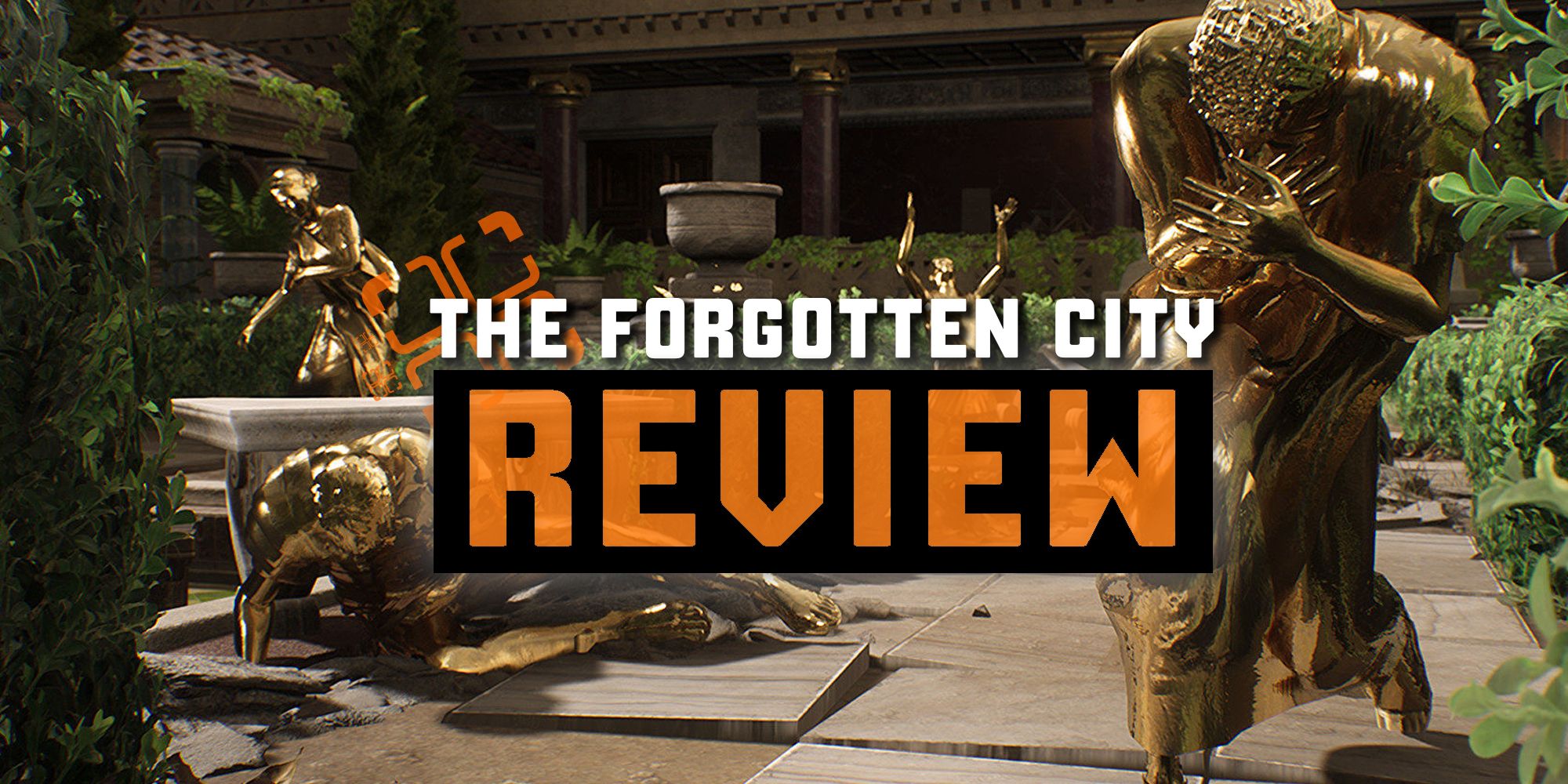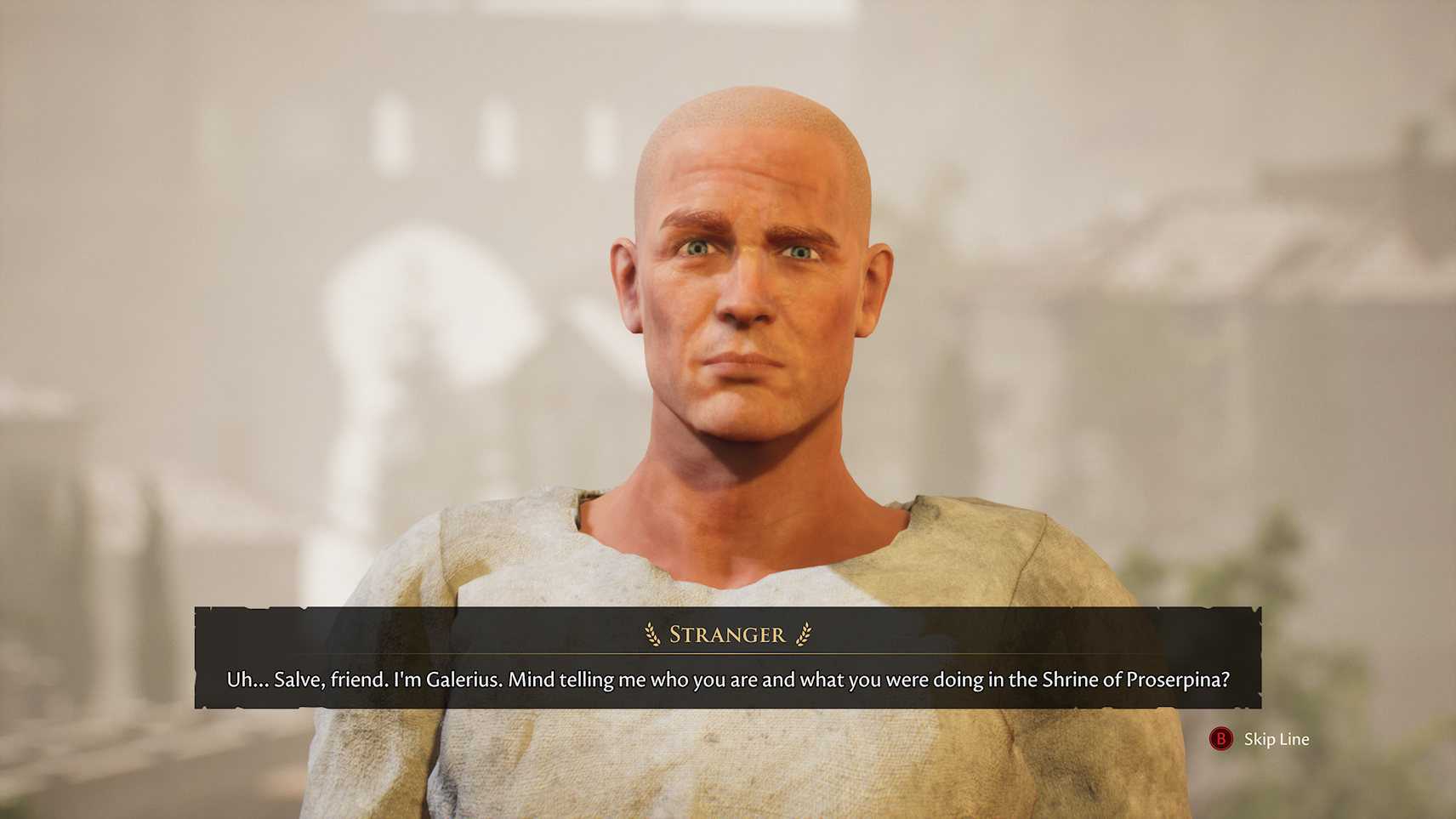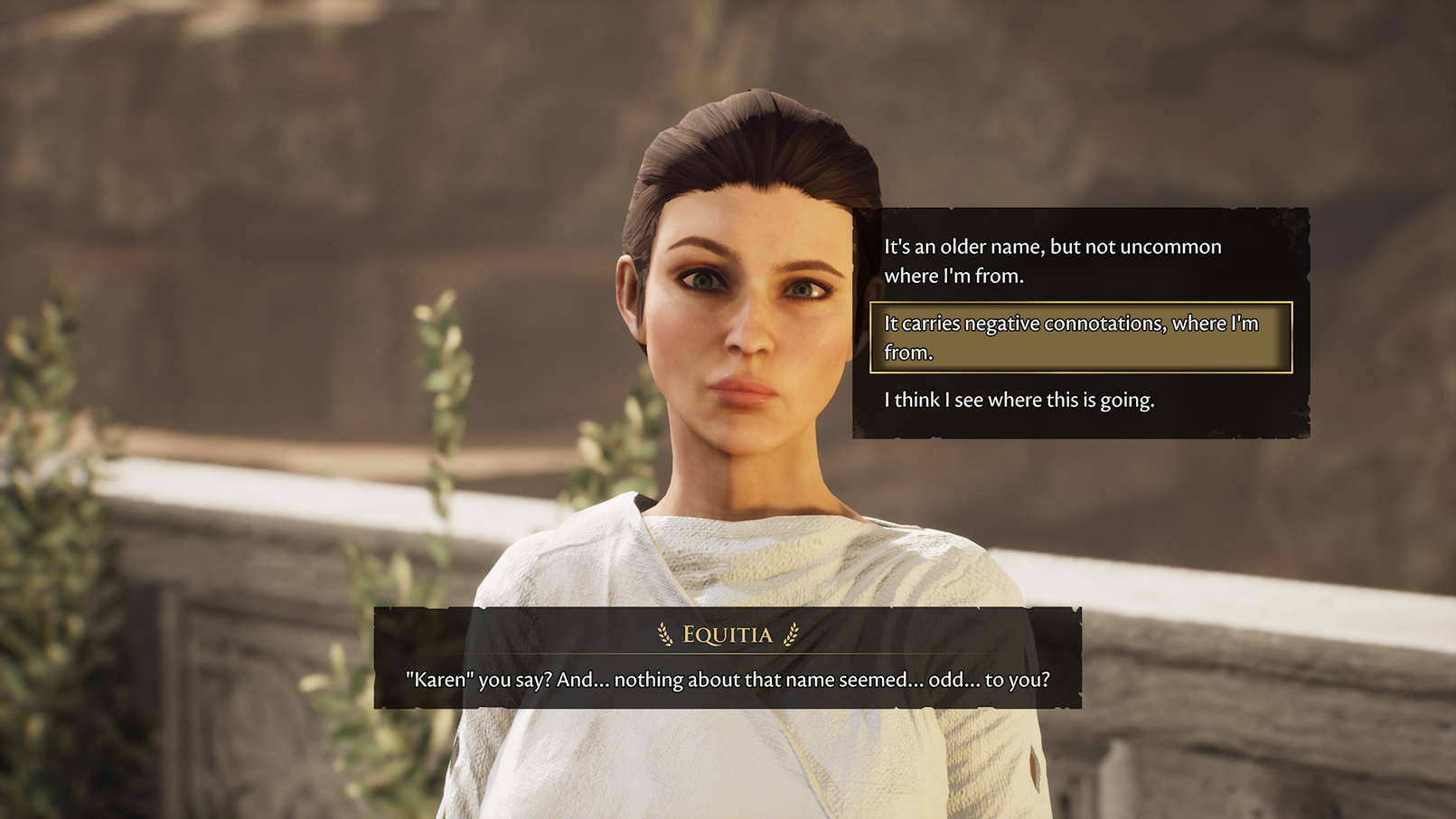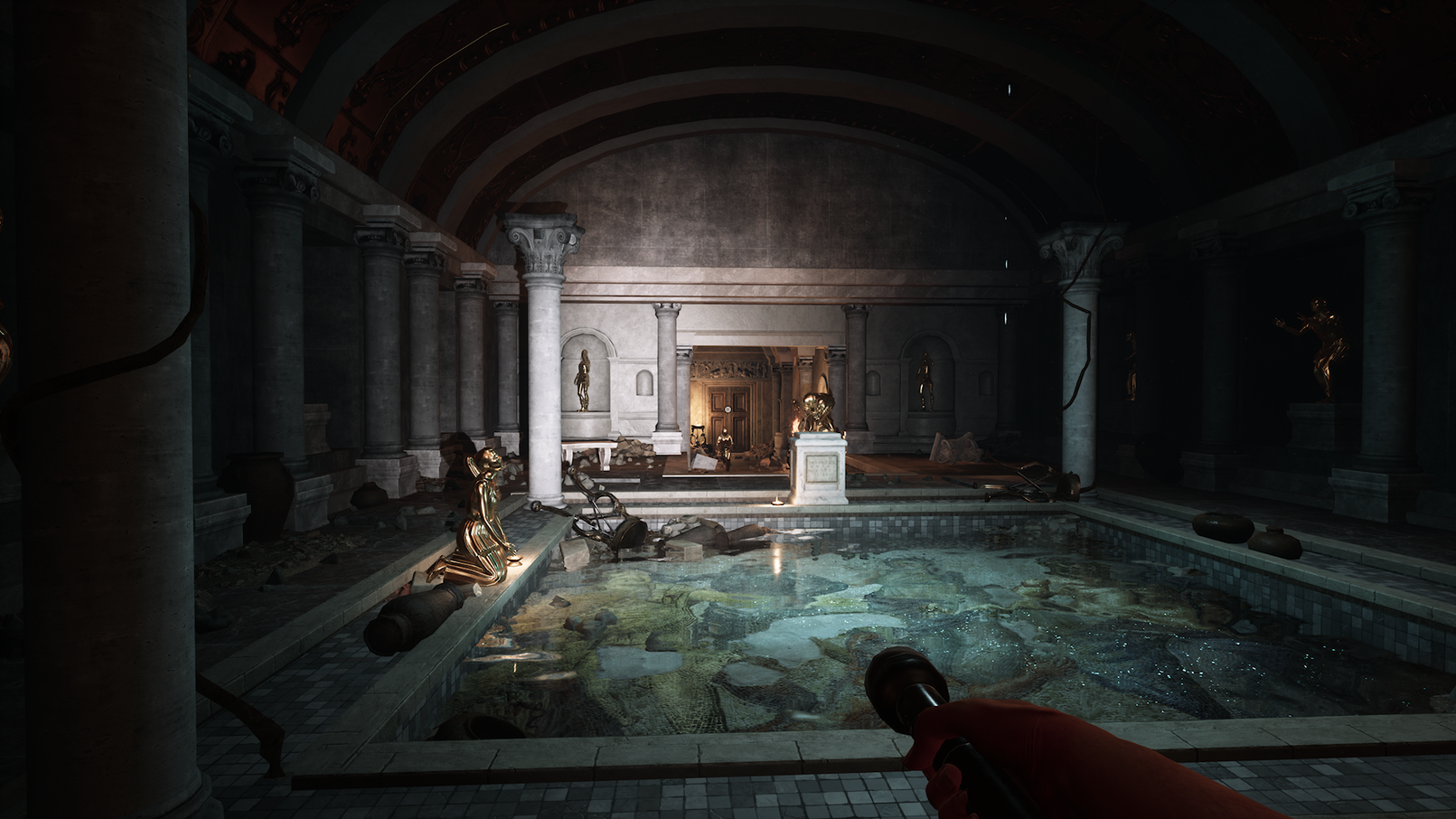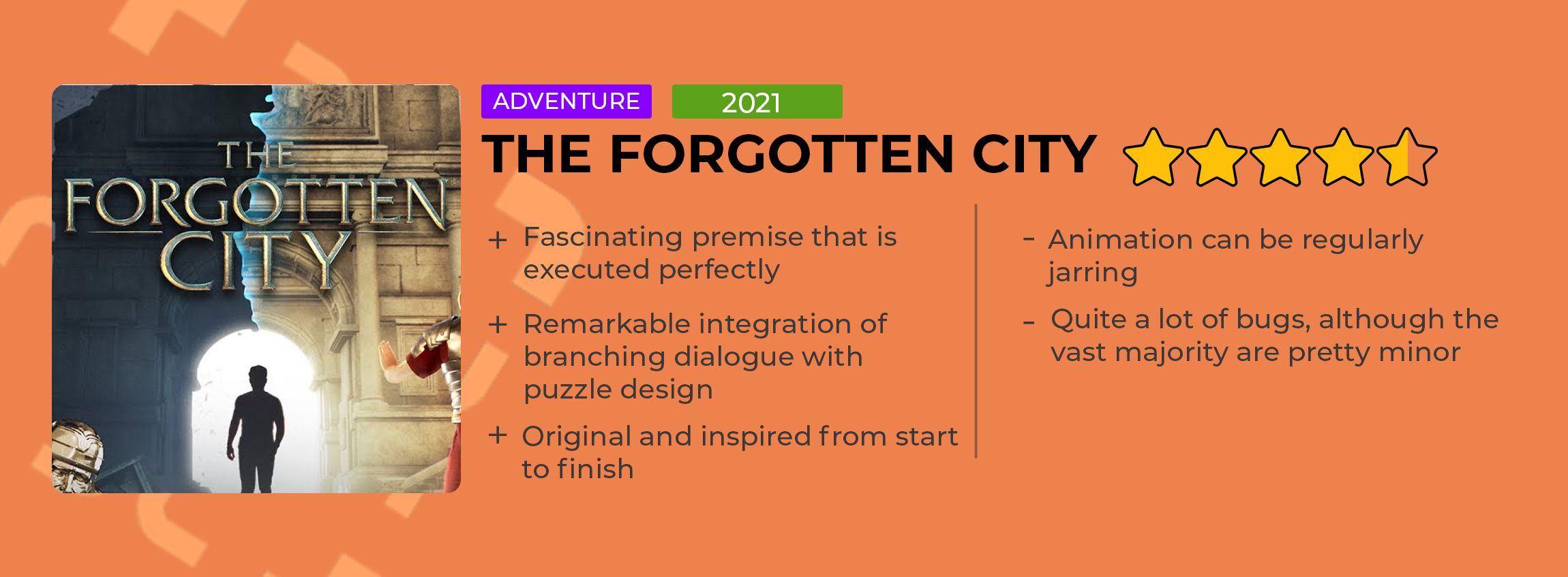As you trundle through the Roman Forum, you’ll notice a young woman quivering outside the Temple of Demeter - apparently, an assassin sent by Emperor Nero himself has arrived to expunge a group of cultists. She asks you to join her in the shrine, but it immediately collapses, fatally wounding her. Still, you march on to confront the assassin, who you’ll quickly learn can’t be reasoned with - regardless of what you say, he’ll knock an arrow and loose it straight at your forehead. For some reason, it doesn’t connect. The world is wrenched into shades of grey as golden archers chase you towards the Shrine of Prosperina - Persephone, if you’re Greek - and all of a sudden you’re sent hurtling through time and space. Before you know it, you’re walking into The Forgotten City as a stranger once again, but now you have a secret, unquantifiable intellect. Next time you meet Fabia - the girl who was squashed by rubble but has now been miraculously resurrected - you’ll be able to tell her to avoid the shrine. Head up to the assassin, cheekily convince him his target is in a shrine to his left, and watch as you indirectly deal with him without breaking The Golden Rule - we’ll get to that shortly.
Modern Storyteller, the developer behind The Forgotten City, has what is probably one of the most apt and accurate studio names in video games. Set in an underground metropolis locked 2,000 years in the past, this is a game that recognizes its form as emphatically that: a game. In an era where developers regularly lean into film, television, and other forms of older, more widely respected screen media, it’s refreshing to see a studio elevating high-concept game design principles. If I had to put a label on The Forgotten City, I’d call it an immersive sim - it’s one extremely intricate puzzle constituted by dozens of smaller ones, all of which have multiple solutions that both complement and contrast each other. It rewards slow, measured, and thorough exploration - everything you engage with has its own distinct value.
The Forgotten City revolves around one very simple but paradoxically complex concept - The Golden Rule. Essentially, everyone who lives here - all of whom arrived independently of one another over the course of many years, from various different cultural backgrounds - is bound to one unwavering principle: the many shall suffer for the sins of the one. The problem is, “sin” is never given a fixed definition. Murder, theft, and arson are off the table, but what about lying? Insulting someone? Deception, trickery, blackmail - where do you draw the line when the Legion’s concept of decimation is multiplied tenfold, for all eternity and with zero compromise?
This is no small issue to reckon with, although The Forgotten City’s moral, mythological, and philosophical musings are fascinating and at all times intelligent. That’s not to say it’s self-serious or aggrandizing - you can explain Karen memes to a Roman priestess and use your ability to come back in each cycle to tell awful people you already know they’re awful. There’s a lot of heart in this game - a lot of warmth, and a clear and confident sense of self. But whether you’re engaging a Grecian hermit in Socratic rhetoric or telling a gruff warrior he’s a big fat liar, it all feels coherent because it’s all so natural.
Admittedly, this is one of the hardest reviews I’ve had to write in a long time. I could go through the motions and explain various elements of the game to you - combat is present but not prevalent and is also largely avoidable. The art is stunning, with professional academics having consulted on making all of the Roman, Greek, Egyptian, and Sumerian architecture and infrastructure accurate. The Forgotten City’s greatest strength is undoubtedly its implementation of branching dialogue as part of a web of interconnected speech puzzles, although not even that is really worth extrapolating in too much detail because it feels unfairly reductive. This is a case where ambition has clearly been allowed to go unchecked. It’s one of those rare, exceptional games that stands on its own - a clear trailblazer of what games can actually be if they’re unafraid to experiment with what makes them games in the first place.
Consider, for example, that some quests can only be properly completed if you fail them. Carry out the ostensible objective of certain missions and you will reset the time loop, having to start your day all over again. There are two ways to successfully fail a quest in The Forgotten City: by ignoring it, or by breaking The Golden Rule for your own personal gain in the next cycle. Whether that be to obtain a weapon, or to steal money, or to learn a crucial detail about someone that can be employed either empathetically or manipulatively in your next loop, The Forgotten City largely reinvents what it means to ‘win.’ That’s not to mention how much every single secret, miniscule, seemingly devoid of importance piece of information matters. If you choose an archaeologist background at the beginning of the game, you can make comments in certain situations that are unique to that character. If you’re a fugitive, though? There are legitimate parts of the level design that can only be accessed with that class’ 25 percent speed increase, opening up completely original avenues that cannot be discovered in any other playthrough.
You steal a potion, breaking The Golden Rule but carrying it with you to the following loop, allowing you to save someone who has been poisoned in the nick of time. You jump from an enormous precipice into the atrium of a patrician’s villa, at which point you can obtain a key that unlocks the front door - there are numerous other ways to access this villa, but the fact you encounter them all at different points of the game depending on which stories you prioritize first testifies to the game’s immense versatility. You can find incriminating notes in people’s quarters, rig elections in the full knowledge that you are consciously influencing not this loop but the next one, and turn objects to gilded gold using a bow you nicked from Apollo himself. Well, a statue of Apollo, but still - statues are a bit creepy in The Forgotten City.
Don’t get me wrong, The Forgotten City has its flaws, too. The animation is occasionally janky, especially during conversations, and while the bugs I experienced were minor, they were also numerous. Some of the mission design also strays too far from the game’s main ideas - there’s a quest where you need to jump off a zipline to collect a flower that is intensely frustrating due to how persnickety the controls are for an action that precise.
Ultimately, though, The Forgotten City is one of those games that will inspire other games for years to come. It’s absurd to think it was mostly developed by a three-person team, and yet the clear, unanimous focus a team this small permits is evident throughout the entire game. It is clever not just in terms of its story or themes, but in how it packages and delivers those themes through one of the most inspired and tight gameplay loops I’ve seen in a long time. It doesn’t matter whether you’re a history buff, story lover, or video game fanatic with a penchant for mystery and immersive design - The Forgotten City is a game that everyone should play because it’s a game that signals to the future of the industry. Bit of a paradox given that it’s set two millennia ago, eh? That joke will actually be funny after you play it, I promise.
Score: 4.5/5. An Xbox Series X code for The Forgotten City was provided by the publisher.
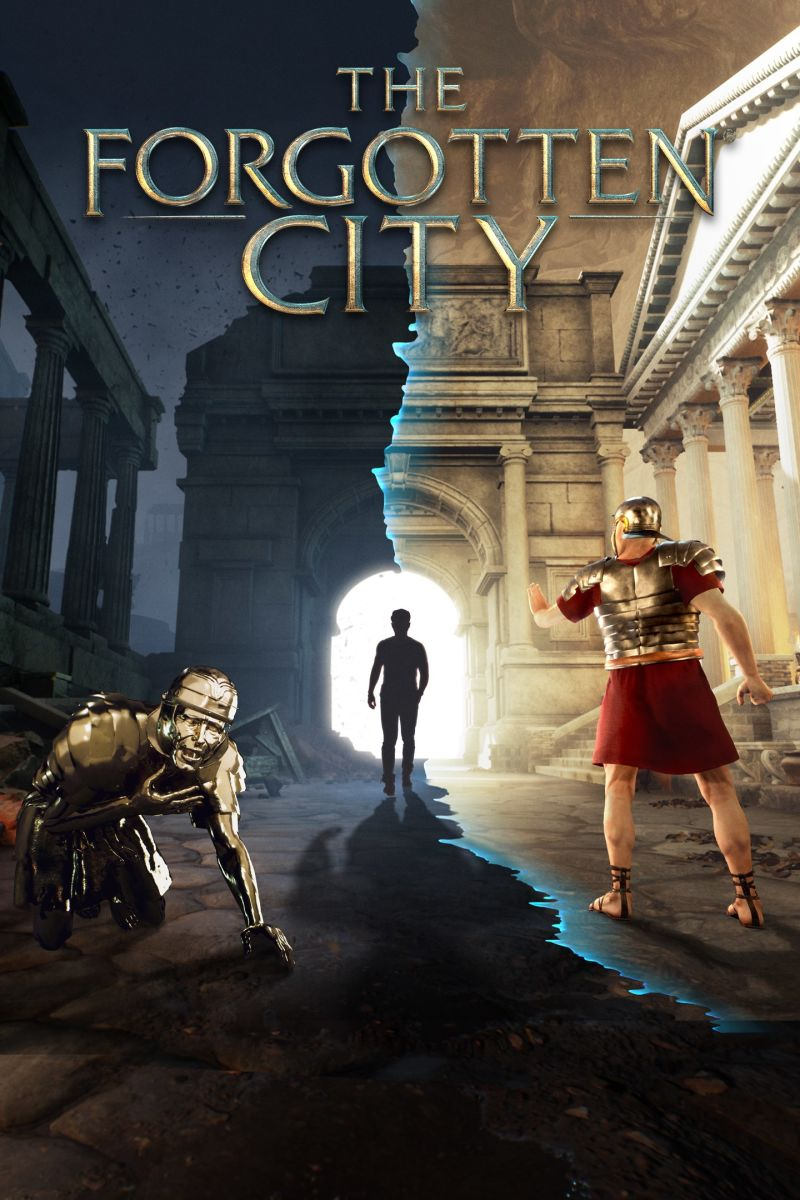
The Forgotten City
The Forgotten City is a 2021 RPG that originally began life as a mod for The Elder Scrolls 5: Skyrim. It puts you in the middle of a doomed Roman city 2,000 years in the past, and you must figure out what happened.

